FW
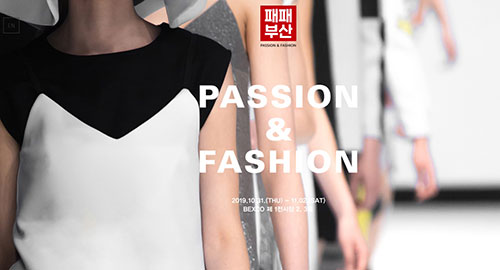
The 2019 Busan International Footwear, Techtextile & Fashion Fair, hosted by Busan Metropolitan City and supervised by the Busan Economic Promotion Agency, was held at BEXCO’s Exhibition Center from October 31through November 2.
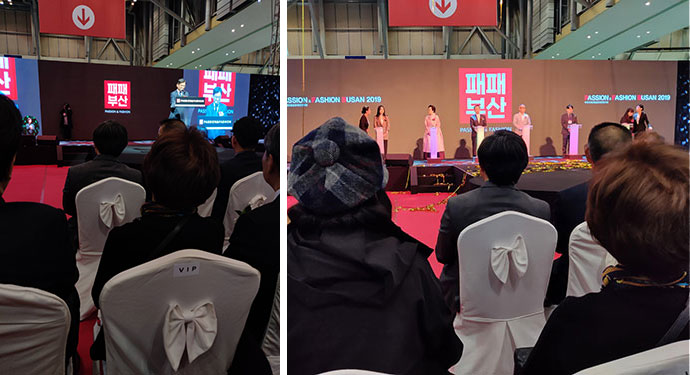
The fair is a combination of three major exhibitions (Busan International Shoe Show, Busan Fashion Week, and Busan International Footwear, Techtextile & Fashion Fair), the event began in 1993 as the Busan International Shoe Leather Exhibition. Based on 27 years of experience, it offers intensive business and marketing opportunities in Korean/overseas techtextiles, footwear, and fashion.
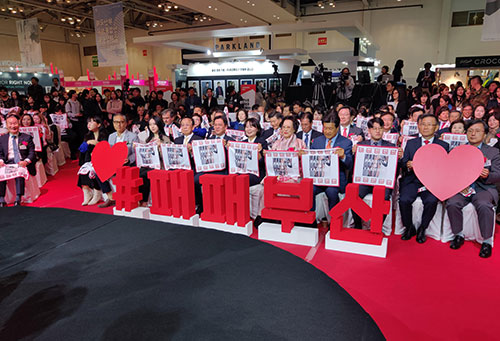
FashionatingWorld took the opportunity to interact with some of the prominent exhibitors at the event. One of these included Adage Korea lead by Kim su guen,Director & Kim yoo soo,CEO. Soo opines that though there is some slow down trickling in but his company is quite capable of navigating it by offering more and more variety and constant innovation in our products. The company exports a good volume of products to US & Philippines on constant basis. It participates in BISS on regular basis and we get local buyers and international buyers generally come from China & other Southeast Asian countries.
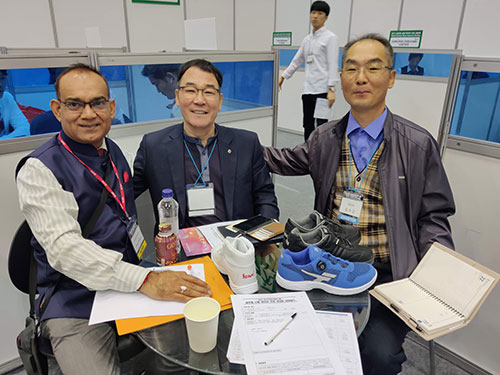
Another exhibitor Leepyo Hong,Overseas Manager-Treksta part of Hypergrip Korea. Treksta manufactures outsole and hypergrip high tech shoes mostly for Korea Government.Under Treksta, the company has its own facilities in Myanmar and Vietnam. Hong said, “global trade is shrinking which is quite a worrisome factor top on global buyers' minds as of now. But fortunately for us situation is so far so good. Looking ahead we need to invest more seriously in branding & marketing.”
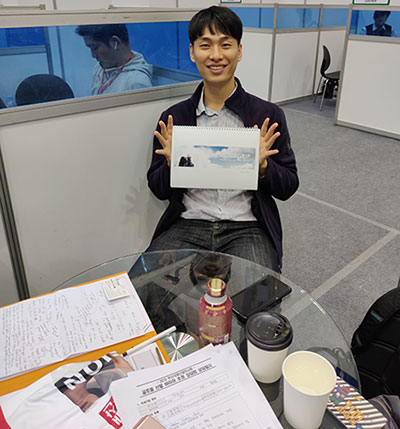
"Robotics demonstrates its new robotic pillow filling system and will provide details of how it has been upgraded till 2019, with several commercial systems still in place.“We believe many visitors to Hemitextil 2020 who saw the demonstration last year will be astonished to hear of the potential gains we are making,” says ACG Kinna CEO Christian Moore."
 Heimtextil is a huge show, has attracted well over three thousand visitors to Frankfurt. Heimtextil exhibition is significantly expanding its focus on textile technologies in 2020 reportedly it has received amazing responses from members of TMAS, Swedish textile. Heimtextil this year also looks up to participation coming from all the corners of world.
Heimtextil is a huge show, has attracted well over three thousand visitors to Frankfurt. Heimtextil exhibition is significantly expanding its focus on textile technologies in 2020 reportedly it has received amazing responses from members of TMAS, Swedish textile. Heimtextil this year also looks up to participation coming from all the corners of world.
Robotics demonstrates its new robotic pillow filling system and will provide details of how it has been upgraded till 2019, with several commercial systems still in place.“We believe many visitors to Hemitextil 2020 who saw the demonstration last year will be astonished to hear of the potential gains we are making,” says ACG Kinna CEO Christian Moore.
Meanwhile, in the first quarter of 2020, Automatex ES, the specialist in automated cutting, sewing and folding equipment, is planning to launch another innovation in advanced manufacturing for the bedding industry.“We have developed a new fitted sheet machine which is able to sew ninety-degree corners and the elastics simultaneously, in a single operation,” explains the company’s CEO Stefan Persson.
Further to this three TMAS members will be exhibiting for the first time at a joint stand show. Central to the technologies of both IRO AB and Eltex is advanced sensor technology. IRO AB has consistently introduced new milestones in the field of yarn feeding technology for weaving machines and at Heimtextil 2020 will be providing information on new introductions to its product range. This includes the ZTF Zero Twist Feeder which keeps yarns or fiber tows constantly stretched to avoid the risks of any snarls or twisting and the ATC-W advanced tension controller for constantly regulating weft feeders at high speeds.
Svegea of Sweden has over 60 years of experience in exclusively designing, manufacturing and installing bespoke bias cutting, roll slitting and rewinding and inspection machines. The company’s complete Bias System includes a tube sewing unit a bias cutter/winder for opening up a previously-formed tube material – spirally on a bias – and strip cutter. Circular woven materials are fed to the cutter via the revolving winder to be slit at angles, so that both the warp and weft of the weave are skewed at specified angles rather than just in the vertical and horizontal directions, as is usual. This allows the slit fabrics to drape and form much more easily to complex shapes, with a range of potential applications in areas such as indoor and outdoor furniture, as well as bedding etc.
Heimtextil 2020 the focus will be on its advanced systems for the sewn products sector, including the UPG-Stitch thread break sensor, which is based on the piezoelectric principle and is suitable for all types of yarns while being insensitive to dust, dirt and humidity variations.
Wrangler, the leading denim brand has launched a new foam dyed technology called Indigood that eliminates 100 percent of water waste generated through conventional dyeing methods in denim manufacturing.
The technology reduces energy consumption and energy waste by 60 per cent as compared to other methods of dyeing. This new technique was created in partnership with Texas Tech University and a Spanish fabric mill, Tejidos Royo in Valencia. This new Indigood™ foam-dyed denim represents consistent commitment for using global scale to advance the denim industry.
Usually, to prepare a single pair of jeans, it requires gallons of water and chemicals to transfer the indigo to yarn. This new process uses a foaming agent instead of chemicals and that too without wasting water to give the the denim its blue color.
Having a potential to revolutionise sustainability standards for denim, Wrangler also plans to include other brands to get on board for this technique in future.
"McKinsey’s State of Fashion reveals 2019 is a year of awakening for the fashion industry as it has brought along a number of strategic and operational challenges like sustainability, ethical fashion, etc. To take stock of these challenges, LINKS Foundation for TCBL released a research note that hails blockchain as a ‘trust technology’ that redefines the way transactions work by disintermediating middlemen and kick-starting an era of radical decentralisation."
 McKinsey’s State of Fashion reveals 2019 is a year of awakening for the fashion industry as it has brought along a number of strategic and operational challenges like sustainability, ethical fashion, etc. To take stock of these challenges, LINKS Foundation for TCBL released a research note that hails blockchain as a ‘trust technology’ that redefines the way transactions work by disintermediating middlemen and kick-starting an era of radical decentralisation. The technology is currently in its initial stages. However, its immutable ledger can give the fashion industry a makeover. The technology can be applied in three primary areas:
McKinsey’s State of Fashion reveals 2019 is a year of awakening for the fashion industry as it has brought along a number of strategic and operational challenges like sustainability, ethical fashion, etc. To take stock of these challenges, LINKS Foundation for TCBL released a research note that hails blockchain as a ‘trust technology’ that redefines the way transactions work by disintermediating middlemen and kick-starting an era of radical decentralisation. The technology is currently in its initial stages. However, its immutable ledger can give the fashion industry a makeover. The technology can be applied in three primary areas:
Transparency along the value chain: The technology guarantees transparency and traceability along the entire value chain as it brings visibility to the various production stages.
Enabling communication amongst companies and customers: It also facilitates interactions and commercial exchanges amongst B2B companies and their customers. Blockchain allows customers to verify the trustworthiness of all involved actors in order to streamline reputation management, loyalty programs, and compensation to influencers.
Involving users in company governance: Blockchain also encourages users to participate in company’s governance as well as day-by-day operations. The incentives of shareholders, employees and clients are aligned through tokens to unlock value and make businesses thrive.
Additionally, the research notes interest in blockchain-enabled services varies across different types of fashion companies. The study examines large premium brands, fast-fashion companies, and emerging brands deploying a non-traditional go-to-market model competing against established incumbents. These emerging brands defined as challengers’ – represent the reference archetype for the community of TCBL Associates that tend to prioritise ‘access to the market’ applications. These brands are also interested in ‘value chain management’ applications as it helps them to demonstrate their environmental and social commitments. They are also inclined to explore ‘user engagement’ opportunities as well, either to tap into collective intelligence or to experiment with new fundraising avenues.
Blockchain can thus be instrumental in the implementation of radical transparency paradigm from farm to retail. It can allow granular control of personal data in predicting offering platforms and can redesign incentive mechanisms in peer-to-peer transactions taking place within the TCBL ecosystem. This has been corroborated by the advent of blockchain-based offerings that TCBL Service Providers make available to Associates. Provenance, for instance, uses blockchain technology to enable secure traceability of certifications and other salient information in supply chains to prove authenticity and origin. Another TCBL Service Provider that harnesses the blockchain technology is Seratio, which can capture social value resulting from transactions involving people, products, processes and organizations through this technology.
The textile market in China is showing signs of improvement. The rate of opening of textile factories is picking up, and various orders are beginning to be placed. Inventory is still at a high level, and the growth rate of inventory is also unusually high. Even in the peak season of the textile industry, inventories are growing. This is the fourth consecutive month of inventory growth of more than ten per cent. There is a serious oversupply.
The textile industry chain is running at a high speed, but the demand of end customers is lagging behind. Another phenomenon is that the price of textiles is falling rapidly. In particular prices of chemical fiber fabric and cotton spinning fabric are declining. Price of conventional silk-like fabrics has bottomed out. Taking advantage of the fact that raw material prices, grey cloth prices, and dyeing fees are not high, some people enter the market to look for the bargain-hunting and hope to sell at a high price when the market recovers.
The price of all kinds of silk-like fabrics has dropped by almost 20 per cent. Therefore, most bargain-hunting investors are buying such fabrics. When prices of these silk-like fabrics rise in spring and summer next year, they will make a profit.
Selfridges London recently opened its first resale boutique Vestiaire Collective to enable customers to buy and sell luxury goods. Launched on October 30, 2019, this boutique, located in an exclusive department store in London, sells amazing vintage pieces and sells pre-owned luxury goods.
The Selfridges Vestiaire boutique opened with 200 accessories and ready-to-wear womenswear pieces that are exclusive to the boutique, including a Mugler rainbow jacket from Spring/Summer 1990 (GBP 2650), an Azzedine Alaïa “Mon Coeur est à Papa” dress (GBP 3685) and an Yves Saint Laurent Rive Gauche cape (GBP 495). It helps customers sell pieces, either through a drop-off concierge service, where pieces are evaluated and processed by Vestiaire, or by listing the item directly through the app using a white photo backdrop available on-site.
Decathlon, the leading sports retailer, aims to achieve its science-based emissions targets in line with the goals of the Paris Climate Change Agreement. In order to achieve these goals, the company has sought approval from the Science Based Target (SBT) initiative, which has approved its Climate Change commitments. Decathlon has committed to reducing its CO2 emissions associated with direct and indirect emissions linked to buying electricity by 75 per cent and getting its main suppliers to set their own science-based targets by 2024.
These targets will be supplemented by a group-wide target to reduce CO2 emissions per product sold by 40 per cent between 2016 and 2026 for all its sports categories. Decathlon has also signed the Fashion Industry Charter for Climate Action, an industry-led initiative under the aegis of UN Climate Change, in order to help achieve its targets and encourage climate action across the sector
Decathlon aims to achieve these targets through a number of sustainable strategies, including using 100 per cent renewable electricity by 2026 in its stores – including its 45 in the UK - and warehouses, whilst supporting its industrial partners to do the same.
In addition to this, 100 per cent of new Decathlon products will be eco-designed by 2021 and it will also investigate into developing the sale of second-hand products throughout the store. The company also aims to use just 1 per cent air freight for its transportation needs and reduce the impact of other means of transport.
Monsoon hopes to be 90 per cent sustainable by 2023. Summer of 2020 will see the UK fashion retail house unveil 90 per cent sustainable beachwear, which is being seen as a major step toward the company’s commitment to sustainability. The retailer is also planning to use 70 per cent organic cotton by 2020. Presently, it’s only 30 per cent. Additionally, it plans to increase the use of viscose from 60 per cent to 65 per cent by next year. Monsoon is working to devise new strategies so as to minimise its environmental footprint. The four-decade-old company currently has over 180 stores in the UK.
Monsoon’s vibrant fashion and accessories are inspired by bohemian designs, handcrafted in Asia. The collection features striking prints and embellishments. The company offers clothing, accessories and shoes, dresses, tops, knitwear, tunics and kaftans, beachwear, jerseys, trousers, skirts, coats and jackets, shoes and boots, and work wear for women. Monsoon’s exclusive, in-house designed collection of unique, classic pieces – from sophisticated evening to casual day wear – combines feminine styling with exotic color, beautiful fabrics and detailed finishing. For women’s fashion with a more contemporary edge, the Monsoon Fusion capsule collection blends up to the minute catwalk trends with Monsoon signature styling. Monsoon Men has a stylish, on trend take on everything from suits to relaxed day wear.
Tommy Hilfiger is teaming up with US retailer Procell to collect and curate a limited selection of vintage pieces from the brand’s archives. The assortment will focus on Tommy Hilfiger garments from the ’90s and early 2000s—a time when the brand’s color-block windbreakers and baggy pants were part of the pop-culture uniform. This is a brand belonging to PVH Corp.
Tommy Jeans Platform is another example of how the brand is targeting Gen Z and millennial consumers with niche retail experiences. In August, Tommy Hilfiger launched Staycation, a shopping and tie-dye activation. And during New York Fashion Week in September, the brand held Tommy x Zendaya bus activations across New York City, allowing consumers to shop pieces from the collaboration.
Brands are using archival designs to establish new business opportunities. In 2018, Levi’s introduced a collection of pre-worn Levi’s denim. Other heritage brands are retrofitting their old garments for new consumers. In September, Gap partnered with Atelier & Repairs to reimagine looks from the brand’s 50-year archive. Atelier & Repairs was also tapped by Dockers this year to modernize the brand’s Signature Khaki pant and though not a heritage brand Madewell is refurbishing used denim for resale in select stores in a partnership with ThredUp.
Despite corporate commitments to create a more responsible economy, global sustainability performance has remained mostly flat. Companies remain mostly stagnant around supply chain sustainability, says business ratings firm EcoVadis. Only 32 per cent of the businesses surveyed maintained diversity, discrimination and harassment measures such as effective whistleblowing procedures, awareness training and anti-discrimination recruitment tactics. Or to put it a little differently, 68 per cent of businesses have zero measures in place to promote equitable and inclusive workplaces.
The size of the company can shape the focus of its efforts. Larger companies, for instance, score higher on environmental and labor and human rights themes compared to smaller ones, which outperform them in corruption, anti-competition and data privacy. Globally, Europe leads the world in sustainability performance among large companies, followed by North America, Latin America and the Caribbean and, finally, Greater China.
Corporations proclaim their social and environmental bonafides but whether thoughts translate into deeds is another matter. Organizations need to more proactively engage with supply partners to identify and address hidden CSR risks. Left unmanaged, the deepest tiers of the supply chain can expose organizations, people and society to serious issues, including slavery, forced labor, dangerous working conditions, environmental waste, corruption and more.












